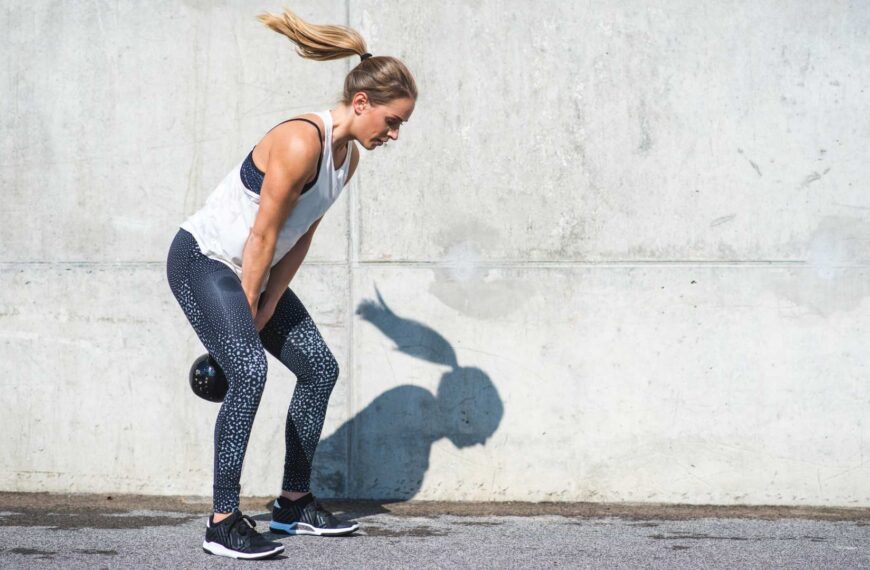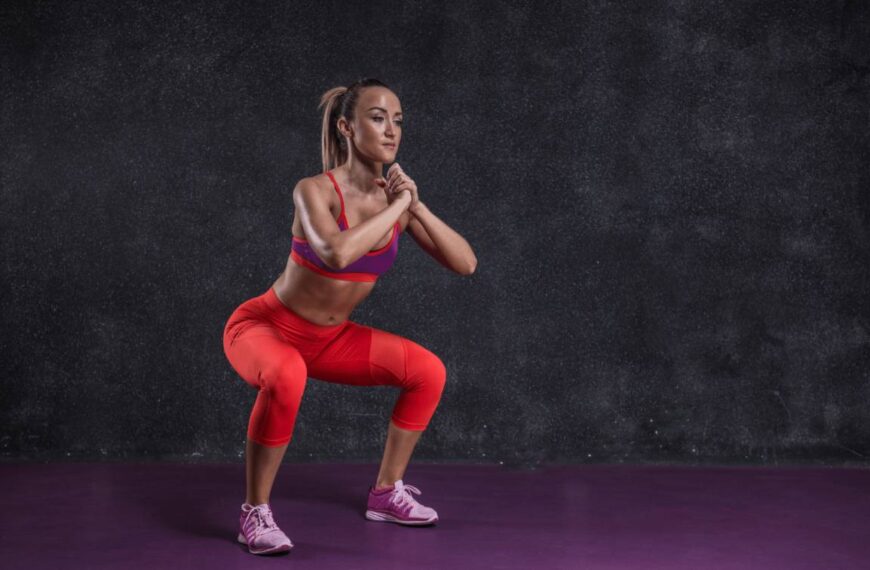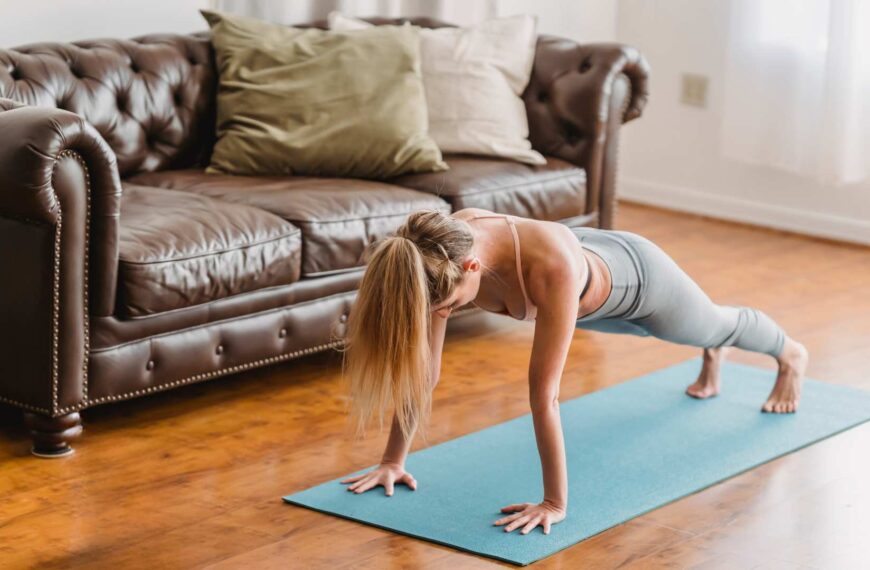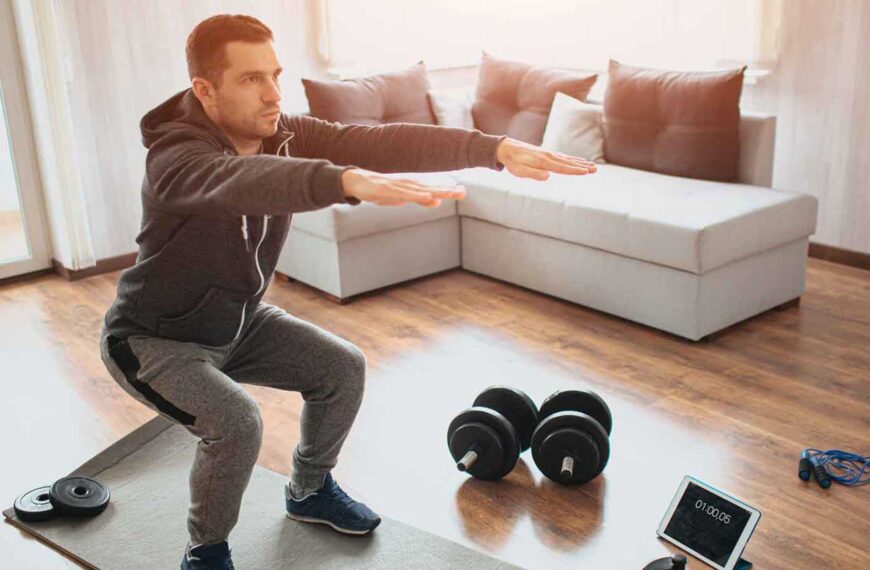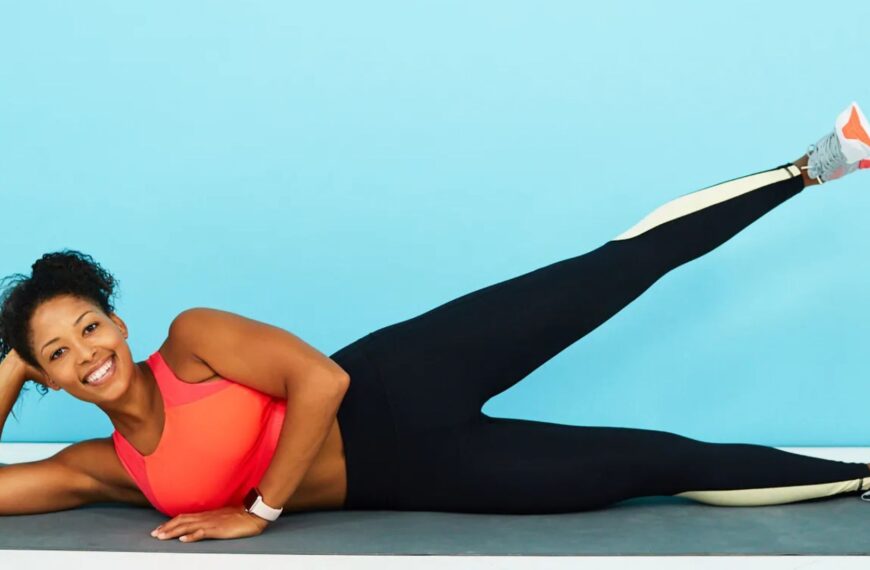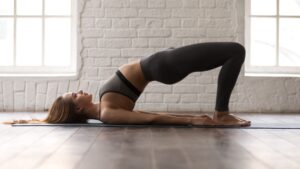Sumo squat to leg lift exercise is a powerful lower body workout that can help you strengthen and tone your glutes, quads, hamstrings, and inner thighs while improving your balance, stability, and flexibility. This exercise is a variation of the traditional sumo squat, which is a popular strength training exercise that targets the lower body muscles.
In this article, we will provide you with a comprehensive guide to sumo squat to leg lift exercise, including its benefits, variations, and expert advice. We will also introduce Merlin, a virtual personal trainer app that provides real-time multilingual feedback on your form and posture during exercises, including sumo squat to leg lift exercise.
Summary
- The article covers the benefits, variations, and expert advice on the sumo squat to leg lift exercise.
- It explains how this exercise strengthens and tones the lower body, improves balance and flexibility, and provides variations for different fitness levels and goals.
- The article also discusses the muscles worked, benefits for specific goals, common mistakes to avoid, and includes a section on frequently asked questions.
Benefits of Sumo Squat to Leg Lift Exercise
Sumo squat to leg lift exercise offers a range of benefits for your lower body muscles, including:
1. Strengthen and Tone the Lower Body Muscles
Sumo squat to leg lift exercise targets your glutes, quads, hamstrings, and inner thighs, which are essential for a strong and toned lower body. The sumo squat activates the adductor, or inner thigh, muscles more than the front or back squat, in addition to targeting the same lower body muscles. By performing this exercise regularly, you can increase your overall lower body strength and muscle mass.
2. Improve Balance, Stability, and Flexibility
Sumo squat to leg lift exercise challenges your balance and stability, especially when you lift your leg off the ground. This exercise also improves your flexibility by stretching your hip flexors and inner thighs. By incorporating this exercise into your workout routine, you can improve your overall athletic performance and reduce your risk of injury.
3. Provide Variations and Modifications for Different Fitness Levels and Goals
Sumo squat to leg lift exercise can be modified or adjusted to suit different fitness levels and goals. For example, you can add weights, change foot placement, or increase repetitions to make the exercise more challenging. Alternatively, you can perform the exercise without weights or reduce the range of motion to make it easier. By adapting the exercise to your fitness level and goals, you can achieve better results and avoid injury.
How to use Merlin App for Sumo Squat to Leg Lift Exercise
The Merlin App is an invaluable tool for anyone looking to master exercises like the Sumo Squat to Leg Lift. This particular exercise is a compound movement that engages various muscle groups, including the quads, hamstrings, glutes, inner thighs, and core. While it can be highly effective for building lower body strength and stability, it can also be challenging to perform correctly. The Merlin App steps in as a virtual fitness coach, providing guidance and real-time feedback to ensure you get the most out of this exercise.
When you’re ready to perform a Sumo Squat to Leg Lift with the Merlin App, you can start by selecting this exercise from the app’s library. The AI-powered feature comes into play immediately, helping you maintain proper form. It can monitor your squat depth, ensuring that you go low enough while maintaining a wide stance, as required for a Sumo Squat. It also assists you in keeping your knees aligned with your toes, which is essential to prevent strain on your joints.
As you transition from the squat position to the leg lift, the Merlin App continues to provide feedback. It can analyze the smoothness of your movement, ensuring you control the lift and engage your inner thigh and core muscles effectively. The app may give real-time feedback with verbal cues to guide you through the exercise, offering suggestions on pace and technique. If it detects any deviations from the correct form, it will alert you and provide instructions on how to adjust.
How to Perform Sumo Squat to Leg Lift Exercise
To perform sumo squat to leg lift exercise, follow these step-by-step instructions:
- Stand with your feet slightly wider than shoulder-width apart, with your toes pointing slightly outward.
- Engage your core and keep your back straight throughout the exercise.
- Lower your body into a sumo squat by bending your knees and pushing your hips back.
- Keep your knees over your ankles and your weight on your heels.
- As you come up from the squat, lift your right leg off the ground and extend it straight out to the side.
- Keep your left foot firmly planted on the ground.
- Lower your right leg back to the ground and repeat the exercise with your left leg.
- Perform 10-12 repetitions per leg for 2-3 sets.
To ensure proper form and technique, use Merlin, the virtual personal trainer app that provides real-time multilingual feedback on your form and posture during exercises, including sumo squat to leg lift exercise.
Muscles Worked in Sumo Squat to Leg Lift Exercise
Sumo squat to leg lift exercise targets several primary and secondary muscles in your lower body, including:
1. Glutes
The glutes are the largest muscles in your lower body and are responsible for hip extension and rotation. Sumo squat to leg lift exercise targets the glutes, especially when you lift your leg off the ground.
2. Quads
The quads are the muscles on the front of your thigh and are responsible for knee extension. Sumo squat to leg lift exercise targets the quads, especially when you lower your body into a sumo squat.
3. Hamstrings
The hamstrings are the muscles on the back of your thigh and are responsible for hip extension and knee flexion. Sumo squat to leg lift exercise targets the hamstrings, especially when you lower your body into a sumo squat and lift your leg off the ground.
4. Inner Thighs
The inner thighs, also known as the adductor muscles, are responsible for hip adduction and are activated more in squat to leg lift exercise than in traditional squats.
To ensure that you are targeting each muscle group effectively, engage each muscle group consciously and with intent during the exercise.
Benefits of Sumo Squat to Leg Lift Exercise for Specific Goals
Sumo squat to leg lift exercise can benefit users with different fitness goals, including:
1. Weight Loss
Sumo squat to leg lift exercise can help you burn calories and lose weight, especially when combined with a healthy diet and cardio exercise. This exercise targets the large muscles in your lower body, which can help you burn more calories and fat.
2. Muscle Gain
Sumo squat to leg lift exercise can help you build muscle mass and increase your overall lower body strength. By performing this exercise regularly, you can challenge your muscles and stimulate muscle growth.
3. Sports Performance
Sumo squat to leg lift exercise can improve your balance, stability, and flexibility, which are essential for athletic performance. This exercise also targets the lower body muscles, which are essential for many sports, such as running, jumping, and kicking.
To achieve specific goals, incorporate this exercise into your workout program strategically. Consult with your trainer on how to achieve your fitness goals with sumo squat to leg lift exercise.
Variations and Modifications of Sumo Squat to Leg Lift Exercise
Sumo squat to leg lift exercise can be modified or adjusted to suit different fitness levels and goals. Some variations and modifications include:
1. Add Weights
You can add weights, such as dumbbells or kettlebells, to increase the resistance and intensity of the exercise. Hold the weights at your sides or in front of your chest during the exercise.
2. Change Foot Placement
You can change your foot placement to target different muscle groups and challenge your balance and stability. For example, you can perform the exercise with your feet closer together or farther apart.
3. Increase Repetitions
You can increase the number of repetitions to challenge your endurance and stamina. Aim to perform 15-20 repetitions per leg for 3-4 sets.
By incorporating different variations and modifications of the exercise, you can challenge your muscles and avoid plateaus in your progress.
Incorporating Sumo Squat to Leg Lift Exercise in Your Workout
To incorporate sumo squat to leg lift exercise into your workout routine, follow these guidelines:
- Warm up your lower body muscles with some dynamic stretches and light cardio exercise, such as jumping jacks or running in place.
- Perform 2-3 sets of sumo squat to leg lift exercise, with 10-12 repetitions per leg.
- Rest for 30-60 seconds between sets.
- Cool down with some static stretches and foam rolling.
- Incorporate this exercise into your lower body circuit or HIIT session, or perform it as a standalone exercise.
To progress over time, increase the resistance, repetitions, or difficulty level of the exercise.
Common Mistakes to Avoid
Some common mistakes that users make when performing sumo squat to leg lift exercise include:
1. Leaning Forward
Leaning forward during the exercise can put unnecessary stress on your lower back and reduce the effectiveness of the exercise. Keep your back straight and your core engaged throughout the exercise.
2. Lifting your Leg too High
Lifting your leg too high during the exercise can strain your hip flexors and reduce your stability. Lift your leg only as high as you can while maintaining your balance and stability.
3. Rounding your Shoulders
Rounding your shoulders during the exercise can reduce your posture and affect your breathing. Keep your shoulders back and down throughout the exercise.
By avoiding these common mistakes, you can perform the exercise safely and effectively.
Conclusion
Sumo squat to leg lift exercise is a powerful lower body workout that can help you strengthen and tone your glutes, quads, hamstrings, and inner thighs while improving your balance, stability, and flexibility. By incorporating this exercise into your workout routine, you can achieve better results and reduce your risk of injury.
We hope this guide has provided you with valuable insights and tips on how to perform sumo squat to leg lift exercise safely and effectively. Remember to consult with your trainer or doctor if you have any questions or concerns.
If you want personalized feedback on your form and posture during the exercise, download Merlin, the virtual personal trainer app that provides real-time multilingual feedback on your exercises.
Frequently Asked Questions
Is Sumo Squat to Leg Lift Exercise Safe?
Yes, sumo squat to leg lift exercise is safe when performed with proper form and technique. However, if you have any pre-existing medical conditions or injuries, consult with your doctor before performing this exercise.
How Many Repetitions Should I Perform?
Aim to perform 10-12 repetitions per leg for 2-3 sets. You can increase the number of repetitions or sets as you progress.
Should I Add Weights to this Exercise?
You can add weights, such as dumbbells or kettlebells, to increase the intensity of the exercise. However, start with lighter weights and gradually increase the resistance as you get stronger.
